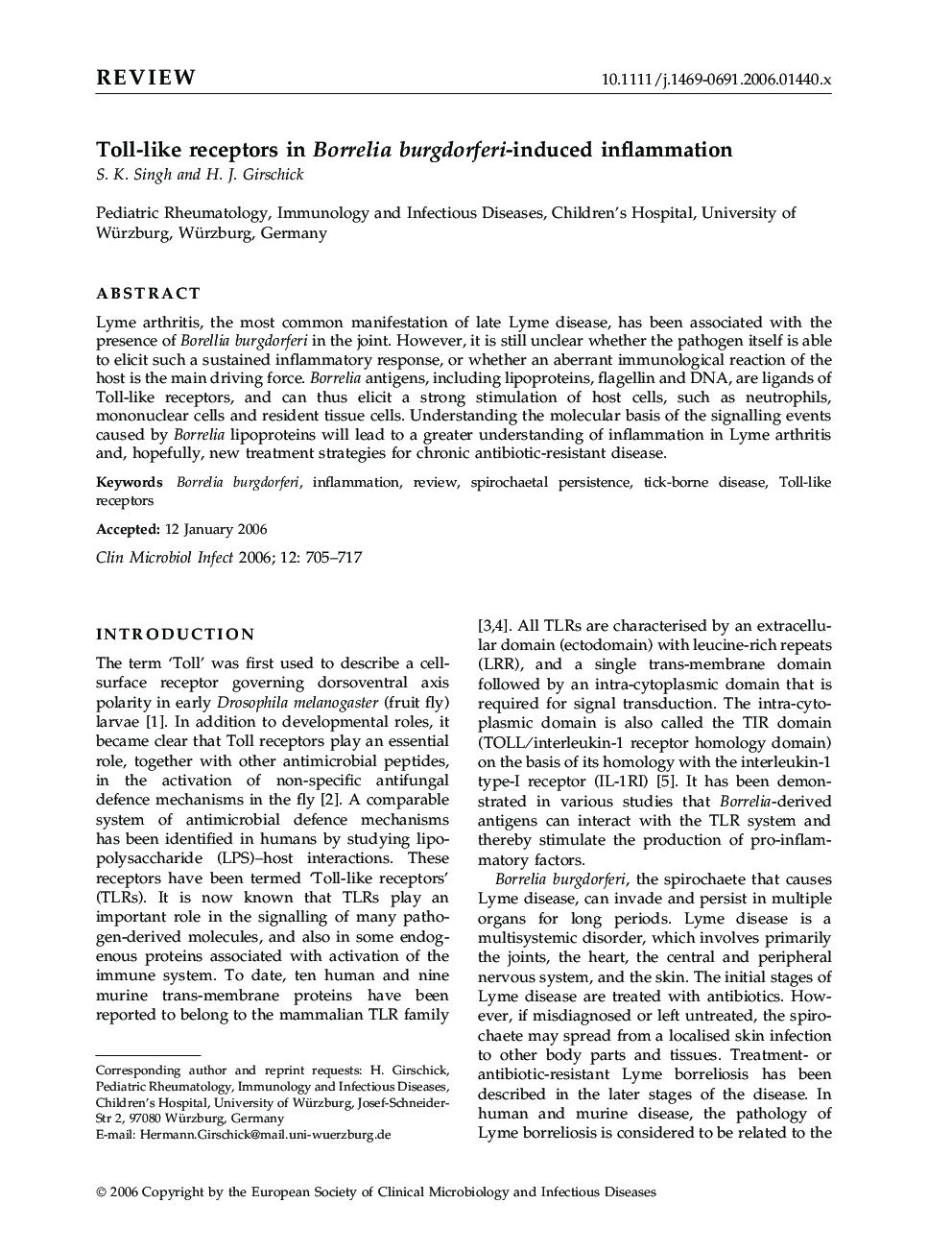| Article ID | Journal | Published Year | Pages | File Type |
|---|---|---|---|---|
| 3398846 | Clinical Microbiology and Infection | 2006 | 13 Pages |
ABSTRACTLyme arthritis, the most common manifestation of late Lyme disease, has been associated with the presence of Borellia burgdorferi in the joint. However, it is still unclear whether the pathogen itself is able to elicit such a sustained inflammatory response, or whether an aberrant immunological reaction of the host is the main driving force. Borrelia antigens, including lipoproteins, flagellin and DNA, are ligands of Toll-like receptors, and can thus elicit a strong stimulation of host cells, such as neutrophils, mononuclear cells and resident tissue cells. Understanding the molecular basis of the signalling events caused by Borrelia lipoproteins will lead to a greater understanding of inflammation in Lyme arthritis and, hopefully, new treatment strategies for chronic antibiotic-resistant disease.
